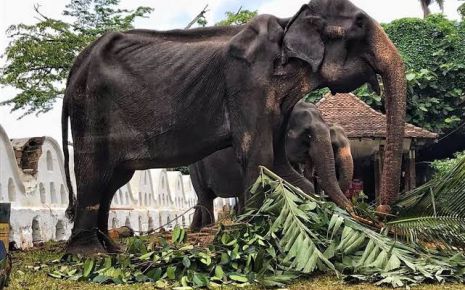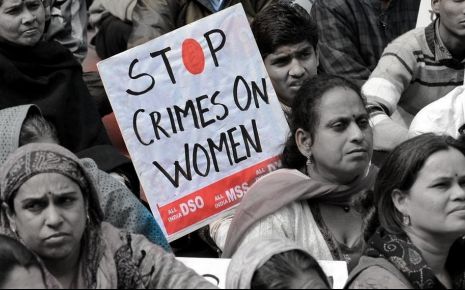Comparative Analysis of US And Indian Election
Elections are a crucial component of any democratic system, allowing citizens to
exercise their right to choose their representatives. The United States and
India, being two of the world's largest democracies, have distinct election
systems that reflect their unique political landscapes.
This comparative analysis aims to explore the similarities and differences between the election systems of the United States and India, focusing on key aspects such as voter registration, campaign financing, voting procedures, and electoral governance. While the subcontinental system is just about 70 years old, the United States version has been in action for nearly 240 years.
These systems basically mean that the citizens of the respective nations have a major say over who comes into power and how they approach their policies. However, one of the most prominent part of these two democracies is that of the election systems they have in place[1].
In fact, one can safely say that except for the countries having a democracy, there are little to no similarities between their electoral systems so the major differences between the two are dealt with in the further paper.
Major Differences
The United States and India are both democratic nations with robust election systems. While they share some similarities, there are notable differences between the two countries' election processes.
Let's analyze and compare the US and Indian election systems across various aspects:
Conclusion:
In conclusion, the electoral systems of the United States and India exhibit both similarities and differences. One significant similarity is that both countries have democratic systems where citizens have the right to vote and elect their representatives. Both the US and India conduct regular elections to determine their leaders and representatives at various levels of government. Additionally, both countries have independent election commissions responsible for overseeing the electoral process and ensuring fairness and transparency.
However, there are also notable differences between the two systems. Firstly, the electoral structure differs significantly. The United States follows a federal system, with separate elections held at the federal, state, and local levels. In contrast, India operates under a parliamentary system, where citizens vote for candidates at the constituency level, and the party with the majority forms the government. Secondly, the voting methods employed in the two countries also differ.
The United States primarily uses a plurality system, where the candidate with the most votes in a constituency wins, even if they do not secure an absolute majority. India, on the other hand, follows a first-past-the-post system, where the candidate with the highest number of votes, regardless of majority, wins the election. Another significant distinction is the role of money in elections.
In the United States, election campaigns are often expensive, and candidates heavily rely on fundraising to finance their campaigns. India also witnesses significant spending in elections, but the impact of money is often amplified by factors such as vote-buying and the influence of wealthy individuals or families. Lastly, the size and diversity of the two countries contribute to variations in the election process.
The United States has a smaller population compared to India, which affects the logistics of conducting elections. India's vast and diverse electorate necessitates staggered multi-phase elections to ensure the participation of all regions. In summary, while both the United States and India embrace democratic principles in their electoral systems, there are notable differences in their electoral structures, voting methods, influence of money, and logistical considerations. Understanding these similarities and differences provides valuable insights into the functioning of these two vibrant democracies.
End-Notes:
This comparative analysis aims to explore the similarities and differences between the election systems of the United States and India, focusing on key aspects such as voter registration, campaign financing, voting procedures, and electoral governance. While the subcontinental system is just about 70 years old, the United States version has been in action for nearly 240 years.
These systems basically mean that the citizens of the respective nations have a major say over who comes into power and how they approach their policies. However, one of the most prominent part of these two democracies is that of the election systems they have in place[1].
In fact, one can safely say that except for the countries having a democracy, there are little to no similarities between their electoral systems so the major differences between the two are dealt with in the further paper.
Major Differences
The United States and India are both democratic nations with robust election systems. While they share some similarities, there are notable differences between the two countries' election processes.
Let's analyze and compare the US and Indian election systems across various aspects:
- Political Parties:
The main difference between the electoral process in India and the USA is the nature of their party systems. There are two main parties in the USA political scene, namely, the Democratic Party and the Republican Party. They stand for very different ideologies, which is the main source of conflict and debate during elections. Although the Libertarian Party, Green Party, and other smaller parties exist, they are considered to be independent entities as they are outliers and are incapable of competing with the two major ones.
India, on the other hand, has multiple parties that operate on the state level and only a few that successfully operate at the national level. The two largest parties in India are the Indian National Congress (INC) and the Bharatiya Janata Party (BJP). Similar to the USA, the ideologies of these differ to a huge extent, presenting voters with an option during the elections
It is the regional parties who tend to supply many deserving candidates. Most states have a dominant regional party. The two big national parties have had to form alliances with such parties to retain the majority and the favour of the people. For example, states like Tamil Nadu and West Bengal have regional parties with a strong presence, such as AIADMK and Trinamool Congress respectively. Here, INC and BJP cannot claim to have any reach. However, the regional parties rarely have a clear-cut ideology on their manifesto and have dynamic policies which are based on the needs and responses of the people of their state[2].
- Voter Registration:
In the United States, voter registration is decentralized, with each state responsible for maintaining its own voter rolls. Eligible citizens must register themselves individually, either in person or online, by providing identification and meeting specific deadlines. In contrast, India follows a centralized voter registration system managed by the Election Commission of India (ECI). Indian citizens aged 18 and above are automatically eligible to vote and are registered through a door-to-door enumeration process conducted periodically.
- Campaign Financing:
Campaign financing plays a significant role in elections and can influence the political landscape. In the United States, campaigns are primarily funded by private donations from individuals, corporations, and political action committees (PACs)[3]. These contributions are subject to certain regulations and disclosure requirements. In India, political parties and candidates receive funds from various sources, including individual donations, corporations, and the government. The Election Commission of India imposes expenditure limits to curb excessive spending and promote a level playing field.
- Voting Procedures:
The voting procedures in the US and India differ in several aspects. In the United States, voting is typically conducted on a predetermined Election Day. Citizens cast their votes in person at designated polling stations or through mail-in absentee ballots. Some states also allow early voting. Indian elections, on the other hand, are conducted over multiple phases to accommodate the large electorate. Voters cast their votes in person at polling booths in their respective constituencies using electronic voting machines (EVMs) or paper ballots.
- Electoral Governance:
The electoral governance structures in the US and India also showcase differences. In the United States, the Federal Election Commission (FEC)[4] oversees federal elections, while each state has its own election administration responsible for conducting state and local elections. Additionally, the US has a two-party system dominated by the Democratic and Republican parties. In India, the Election Commission of India is an autonomous body responsible for conducting all elections in the country, from local to national levels. India has a multi-party system with several national and regional parties competing for seats.
- Election Monitoring and Security:
Ensuring the integrity and security of elections is a shared concern in both the US and India. In the United States, various organizations, including the Department of Justice, monitor elections to prevent voter suppression, fraud, and other irregularities. Additionally, each state has its own mechanisms for monitoring and addressing election-related issues. India's Election Commission deploys extensive monitoring mechanisms, such as election observers and video surveillance, to ensure free and fair elections. Stringent security measures are in place to prevent malpractice and maintain public trust.
- System of Government:
United States: The US follows a federal system with a presidential form of government, where power is divided between the federal government and individual states.
India: India is a federal parliamentary democratic republic, where power is divided between the central government and states.
- Election Schedule:
United States: The US has fixed election dates for federal offices, such as the presidential election held every four years on the first Tuesday after the first Monday in November.
India: Elections in India are held periodically based on the term of the elected body. General elections for the Lok Sabha (the lower house of Parliament) are held every five years, while state legislative assembly elections have varying schedules.
- Election Commission:
United States: The US election system is decentralized, with each state responsible for conducting its own elections. The Federal Election Commission oversees federal elections and enforces campaign finance laws.
India: The Election Commission of India (ECI) is an independent constitutional body responsible for conducting elections at all levels, from parliamentary to local elections.
- Voter Registration:
United States: Voter registration rules and processes vary by state. Eligible citizens must register with their respective state authorities to vote in federal, state, and local elections.
India: In India, the electoral roll is prepared by the Election Commission, and all eligible citizens who are 18 years or older are automatically registered as voters.
- Voting Process:
United States: The US primarily uses paper-based voting systems, but electronic voting machines are also used in some states. Voting can take place via mail (absentee voting), early voting, or in-person on Election Day.
India: India primarily uses Electronic Voting Machines (EVMs) for voting, although paper ballots are used in some cases. Voting is conducted in person on Election Day.
-
12. Campaign Finance:
United States: The US has complex campaign finance regulations. Candidates and political action committees can raise funds from individuals, corporations, and interest groups, with various limits and disclosure requirements.
India: India has campaign finance regulations that limit the amount of money that candidates can spend during elections. Contributions from individuals and corporations are regulated, and parties must file expense reports with the Election Commission.
-
13. Electoral Boundaries:
United States: Electoral boundaries are drawn by each state through a process called redistricting, which can sometimes be subject to gerrymandering.
India: Electoral boundaries are determined by a process called delimitation, which is conducted by a Delimitation Commission. The commission reviews and redraws boundaries to ensure fair representation.
-
14. Election Monitoring:
United States: Election monitoring is conducted by non-governmental organizations, political parties, and the media. Observers ensure transparency and fairness during the election process.
India: The Election Commission appoints observers to monitor elections, ensuring fair conduct and adherence to election rules. Political parties and candidates can also appoint their own agents to observe the process.
-
15. Election Security:
United States: Election security is a major focus, and measures are taken to prevent fraud and ensure the integrity of the electoral process. This includes measures such as voter ID requirements, signature verification, and secure handling of ballots.
India: Election security is also a significant concern in India. The Election Commission deploys security forces to ensure a peaceful environment during elections and takes steps to prevent malpractices like booth capturing and voter intimidation.
-
16. Election Campaigns:
United States: Election campaigns in the US are highly competitive and can be expensive. Candidates engage in extensive campaigning, including rallies, debates, and media advertisements, to gain voter support.
India: Election campaigns in India are vibrant and diverse. Candidates utilize various methods, including public rallies, door-to-door campaigning, and mass media advertisements, as well as social and digital media platforms.
-
17. Election Results and Transition of Power:
United States: The US election system emphasizes a peaceful transfer of power. Once the results are certified, the winning candidate assumes office, and there is a formal inauguration ceremony for the President.
India: In India, once election results are declared, the winning candidates assume their respective offices. The Prime Minister is appointed by the President, and the Council of Ministers is formed.
-
18. Role of Media:
United States: Media plays a significant role in US elections, providing coverage, analysis, and commentary on candidates, campaigns, and election issues. Media organizations conduct exit polls to project election results.
India: Media also plays a crucial role in Indian elections, providing extensive coverage and analysis. However, the Election Commission imposes restrictions on exit polls to maintain the secrecy of voting.
-
Diversity and Representation:
United States: The US election system strives for diversity and representation. Efforts are made to ensure the inclusion of underrepresented groups, such as racial and ethnic minorities, women, and marginalized communities.
India: India's election system aims for representation from diverse social, cultural, linguistic, and regional backgrounds. Reserved constituencies are established to promote political representation for Scheduled Castes and Scheduled Tribes.
Conclusion:
In conclusion, the electoral systems of the United States and India exhibit both similarities and differences. One significant similarity is that both countries have democratic systems where citizens have the right to vote and elect their representatives. Both the US and India conduct regular elections to determine their leaders and representatives at various levels of government. Additionally, both countries have independent election commissions responsible for overseeing the electoral process and ensuring fairness and transparency.
However, there are also notable differences between the two systems. Firstly, the electoral structure differs significantly. The United States follows a federal system, with separate elections held at the federal, state, and local levels. In contrast, India operates under a parliamentary system, where citizens vote for candidates at the constituency level, and the party with the majority forms the government. Secondly, the voting methods employed in the two countries also differ.
The United States primarily uses a plurality system, where the candidate with the most votes in a constituency wins, even if they do not secure an absolute majority. India, on the other hand, follows a first-past-the-post system, where the candidate with the highest number of votes, regardless of majority, wins the election. Another significant distinction is the role of money in elections.
In the United States, election campaigns are often expensive, and candidates heavily rely on fundraising to finance their campaigns. India also witnesses significant spending in elections, but the impact of money is often amplified by factors such as vote-buying and the influence of wealthy individuals or families. Lastly, the size and diversity of the two countries contribute to variations in the election process.
The United States has a smaller population compared to India, which affects the logistics of conducting elections. India's vast and diverse electorate necessitates staggered multi-phase elections to ensure the participation of all regions. In summary, while both the United States and India embrace democratic principles in their electoral systems, there are notable differences in their electoral structures, voting methods, influence of money, and logistical considerations. Understanding these similarities and differences provides valuable insights into the functioning of these two vibrant democracies.
End-Notes:
- https://www.bankbazaar.com/voter-id-difference-between-elections-held-india-and-us.html (visited on June 14, 2023)
- https://www.creditmantri.com/difference-between-elections-held-in-india-and-the-us.html (visited on June 10, 2023)
- https://economictimes.indiatimes.com/the-many-differences-between-the-us-and-the-indian-electoral-systems/no-selecting-the-president-directly/slideshow/79078599.cms (visited on June 11, 2023)
- https://www.iasparliament.com/current-affairs/comparison-of-us-and-indian-election-system.html (visited on June 14, 2023)
- https://www.insightsonindia.com/2016/11/09/3-compare-contrast-election-system-usa-india-200-words.html (visited on June 14, 2023)
Law Article in India
Legal Question & Answers
Lawyers in India - Search By City
LawArticles
How To File For Mutual Divorce In Delhi

How To File For Mutual Divorce In Delhi Mutual Consent Divorce is the Simplest Way to Obtain a D...
Increased Age For Girls Marriage

It is hoped that the Prohibition of Child Marriage (Amendment) Bill, 2021, which intends to inc...
Facade of Social Media

One may very easily get absorbed in the lives of others as one scrolls through a Facebook news ...
Section 482 CrPc - Quashing Of FIR: Guid...

The Inherent power under Section 482 in The Code Of Criminal Procedure, 1973 (37th Chapter of t...
The Uniform Civil Code (UCC) in India: A...

The Uniform Civil Code (UCC) is a concept that proposes the unification of personal laws across...
Role Of Artificial Intelligence In Legal...

Artificial intelligence (AI) is revolutionizing various sectors of the economy, and the legal i...








Please Drop Your Comments